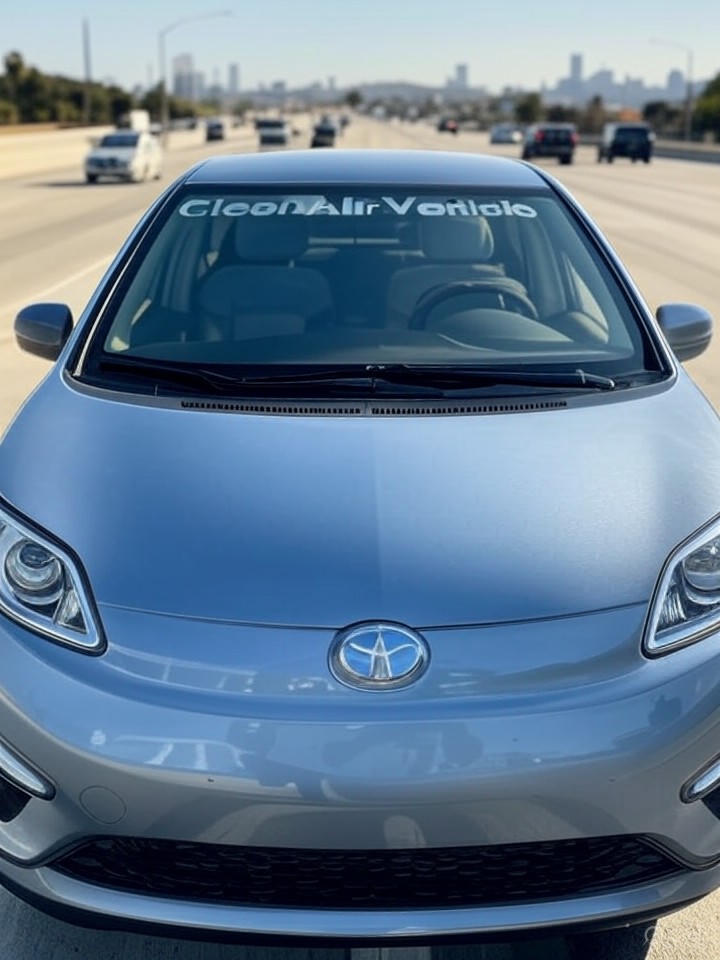For decades, California’s highways have offered a coveted perk to drivers of electric vehicles and other clean-air models: solo access to high-occupancy vehicle (HOV) lanes, courtesy of colorful decals that turned commutes into a breeze. But that incentive is barreling toward a cliff. As of September 30, 2025, the state’s Clean Air Vehicle decal program is set to expire, stripping solo EV drivers of their fast-lane privileges unless federal lawmakers intervene. This shift, rooted in federal regulations that cap such programs at a finite duration, could reshape traffic patterns, EV incentives, and even the broader push toward electrification in the nation’s most populous state.
The program, which began in 1999, was designed to accelerate the adoption of low- and zero-emission vehicles by rewarding owners with time-saving perks. More than 1.1 million decals have been issued, according to state data, transforming HOV lanes into de facto express routes for environmentally conscious commuters. Yet, as EV sales have surged—California now boasts over a million registered electric vehicles—the lanes have grown congested, diluting their original purpose of encouraging carpooling.
The Federal Clock Ticking Down
Federal law, specifically under Title 23 of the U.S. Code, authorizes states like California to grant HOV access to clean vehicles but mandates an expiration date. Without congressional action to extend it, the program’s end is imminent, as highlighted in a recent report from the San Francisco Chronicle. Officials from the California Department of Motor Vehicles (DMV) have already ceased issuing new decals, signaling the wind-down. This isn’t just a California quirk; 13 other states with similar programs face the same deadline, potentially affecting millions of drivers nationwide.
Transportation experts argue the expiration could be a mixed blessing. On one hand, it addresses growing complaints about overcrowded HOV lanes, where solo EV drivers now outnumber traditional carpools in some regions. A study cited by InsideEVs suggests that restoring lanes to their carpool-only intent might reduce overall freeway congestion by 5-10% in high-traffic areas like Los Angeles and the Bay Area.
Impact on EV Adoption and Market Dynamics
The decal’s demise arrives at a pivotal moment for California’s EV market. The state has aggressively promoted electrification, with goals to phase out new gas-powered vehicle sales by 2035—a mandate recently upheld despite political turbulence. However, losing HOV access could dampen EV appeal, particularly for urban professionals who valued the time savings. “It’s been a key selling point,” notes an analyst from the California Air Resources Board, estimating that decal perks influenced up to 20% of recent EV purchases.
Recent posts on X (formerly Twitter) reflect a swirl of frustration and speculation among drivers, with many lamenting the loss as a blow to green incentives. One viral thread from automotive enthusiasts highlighted how the program’s end might push buyers toward alternatives like toll lanes, where paid access remains an option via FasTrak. Meanwhile, industry insiders point to data from ABC7 San Francisco, which reports that plug-in hybrids and fuel-cell vehicles will also lose privileges, potentially slowing their market growth amid already softening EV demand.
Prospects for Renewal and Alternatives
Hope for an extension lingers in Washington. Bipartisan bills have floated in Congress to prolong the program, driven by lobbying from automakers like Tesla and Ford, who see it as vital for sustaining sales momentum. Yet, as Car and Driver detailed in a March analysis, partisan gridlock and budget priorities make renewal uncertain. California lawmakers, including Gov. Gavin Newsom, have urged federal action, emphasizing the program’s role in cutting emissions—equivalent to removing millions of gas cars from roads.
In the absence of renewal, states are exploring workarounds. Some propose income-based HOV exemptions or converting lanes to high-occupancy toll (HOT) systems, where clean vehicles get discounted rates. The Los Angeles Times recently explored how this could evolve into a more equitable model, prioritizing low-income carpoolers over affluent solo EV owners. Transportation planners, drawing from models in Virginia and Colorado, suggest such adaptations could maintain incentives without overwhelming infrastructure.
Broader Implications for Transportation Policy
Critics, however, warn that ending the program abruptly risks alienating early EV adopters, who invested in vehicles partly for these benefits. “It’s like pulling the rug out,” said a spokesperson for the Electric Vehicle Association, referencing surveys showing 40% of owners might reconsider future purchases without perks. Congestion data from the WebProNews underscores the irony: while EV proliferation has clogged lanes, it’s also slashed tailpipe emissions by an estimated 2 million tons annually.
Looking ahead, California’s experience could inform national policy as the U.S.




 WebProNews is an iEntry Publication
WebProNews is an iEntry Publication